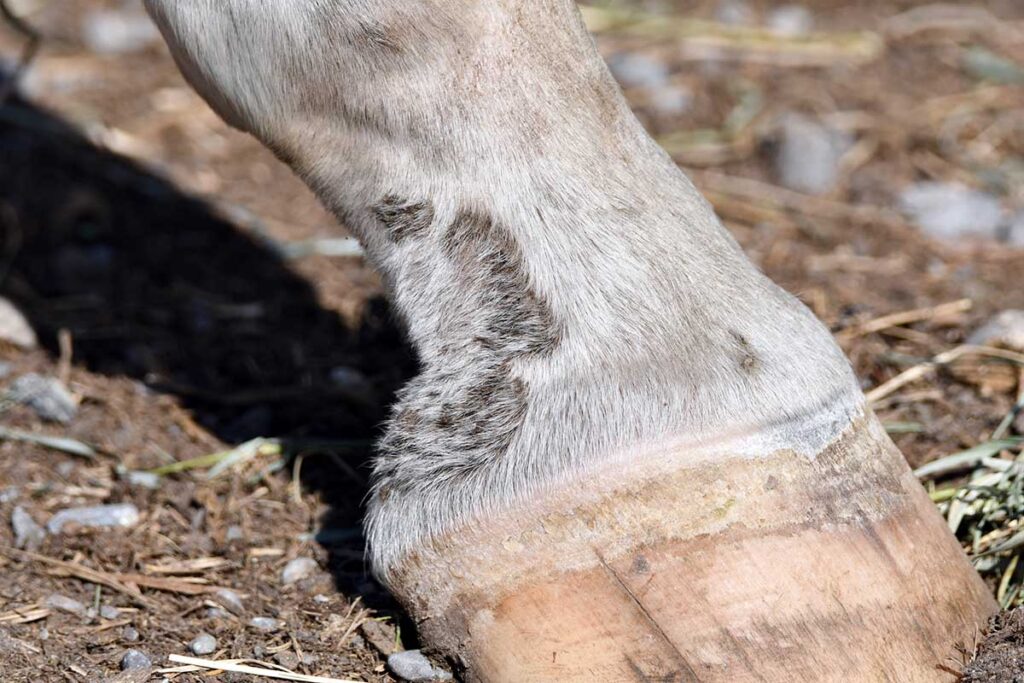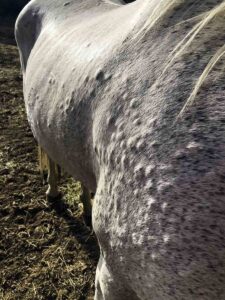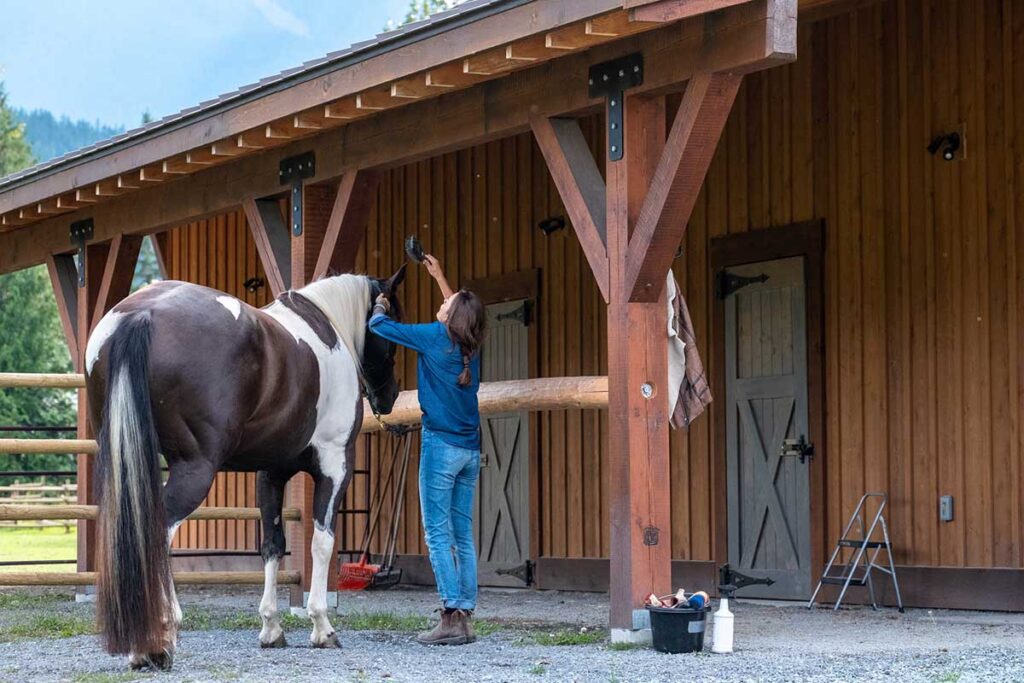Rashes, scrapes, and itchy skin aren’t just human issues. Horses are prone to plenty of skin conditions, particularly because the skin is their body’s largest organ. That’s a lot of surface area for fungi, bacteria, and bugs to infest!
In this article, we’ll describe four common skin ailments that might pop up on your horse. Whether you’ve spotted scabs, irritation, or bald patches, we’ll help you identify the cause and treat the issue.
1. Rain Rot
Rain rot, technically known as dermatophilosis, affects horses living in wet and moist conditions. It might first look like small, crusty bumps and matted hair along the horse’s back, hindquarters, and neck. Left untreated, these lesions can grow and join together as large scabs.
You might notice rain rot on your horse if he’s been turned out in conditions such as rain, high heat and humidity, or winter weather. To heal the lesions and prevent rain rot from spreading, gently curry the affected areas to remove the scabs. Then, bathe your horse with an antimicrobial shampoo and ensure he dries thoroughly. To give your horse some relief and encourage the lesions to heal, apply a soothing topical product that has antimicrobial properties. Avoid applying any harsh chemicals that will irritate the skin.
Tip: Disinfect your grooming tools, especially your curry comb, after grooming a horse with rain rot so it doesn’t spread to other horses.
2. Scratches

Scratches, also known as pastern dermatitis, is a skin infection that typically develops on the backs of horses’ lower legs—the pastern. Classic signs include oozing, inflammation, swelling, itching, flaking, crusting, redness, and scabbing at the affected area. Horses with pink-skinned pasterns, long leg feathers (like you see on draft horses), or living in wet, muddy conditions are most at risk.
If you notice scratches cropping up on your horse’s legs, first move him to a clean, dry environment, such as a clean stall. Wash his legs with an antibacterial shampoo, dry them thoroughly, then apply a topical treatment to provide pain relief and help this frustrating infection heal. Choose a product with soothing ingredients plus antimicrobial and antifungal properties. Don’t pick at the scabs unless they flake off easily. Otherwise, you’ll just compound your horse’s skin issue by creating wounds.
Tip: Be careful when working on the legs, because scratches can be painful enough to cause the horse to kick out.
3. Sweet Itch
Sweet itch, or insect-bite hypersensitivity, is a horse’s allergic reaction to the bites of Culicoides midges, those pesky summertime no-see-ums. Signs of sweet itch include extremely itchy pimple-sized welts around a horse’s mane and top of the tail. Also look for raw skin where your horse has been rubbing the area.
Ease your horse’s discomfort with a soothing shampoo or topical ointment that helps relieve skin inflammation and itching. If midges are particularly active in your region—usually between the months of April and September—help your horse out with some insect repellent and a fly sheet. Be sure to choose a fly spray designed for use on horses and proven to repel biting flies and gnats. Apply full and even coverage for maximum efficacy.
Tip: Keep sensitive horses in the barn when midges are most active at dawn and dusk.
4. Hives

These telltale welts are most commonly allergic responses to anything from medications to feed ingredients to environmental allergens such as pollens and molds. Hives can be swollen, itchy, and uncomfortable for the horse.
If you can identify the allergen, remove it from your horse’s environment. Otherwise, the best way to calm the hives and their associated itching is with veterinarian-prescribed steroids and antihistamines. Topical ointments and soothing baths can also provide relief.
Tip: When you buy a horse, ask the seller if he has any known allergies or sensitivities so you can avoid them.
Take-Home Message
If your horse has an uncomfortable and unsightly skin condition that worsens or doesn’t resolve naturally over a couple of days, contact your veterinarian. He or she might recommend testing to identify the bacterial, fungal, or allergen culprit behind your horse’s skin issue. The results can make treatment more accurate and effective.
This article is brought to you by Absorbine.








